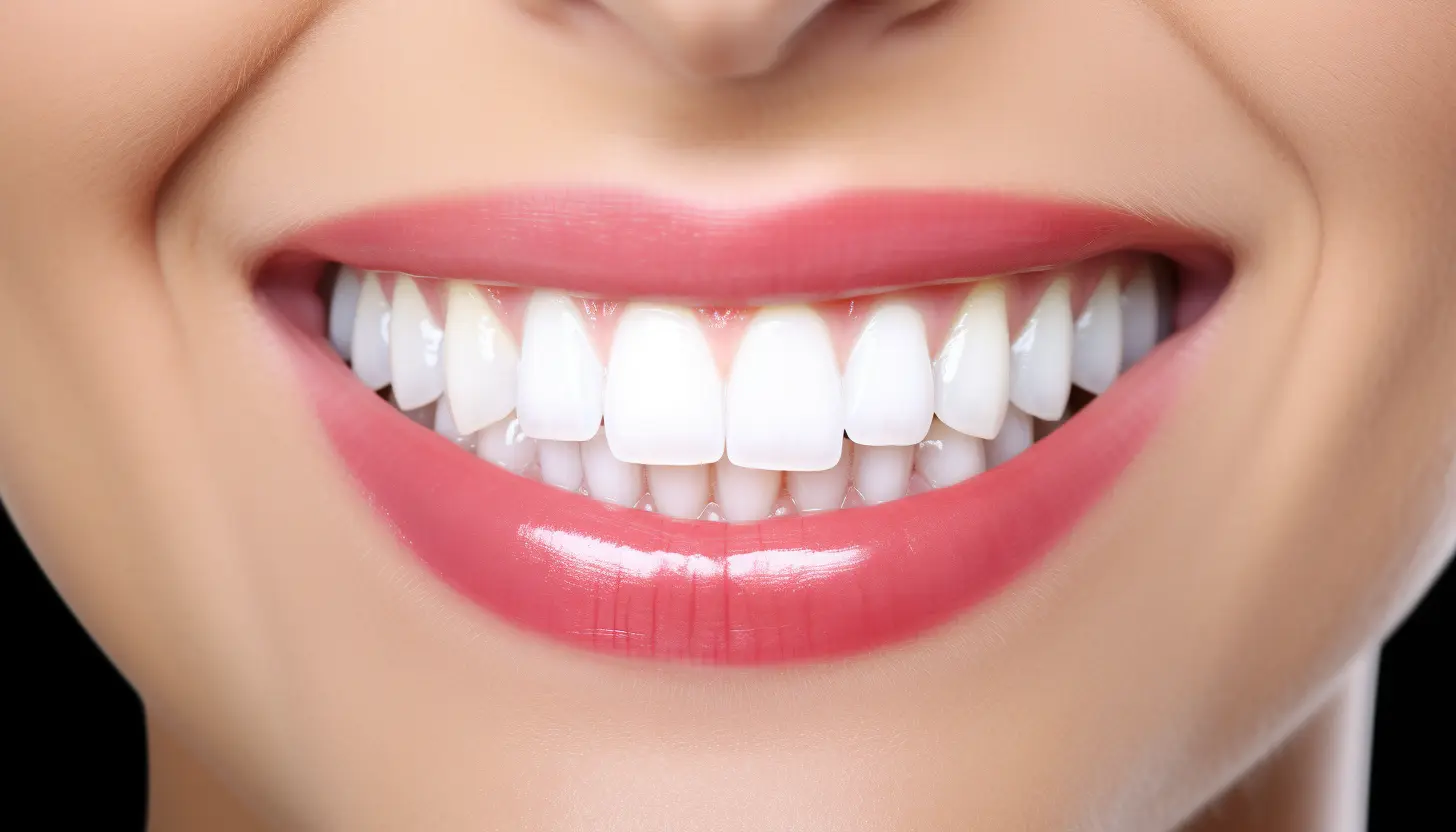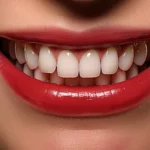Welcome to our comprehensive guide on the intriguing comparison between teeth whitening and veneers. In this blog post, we will delve deep into the realms of dental aesthetics to help you make an informed decision about achieving that radiant smile you’ve always dreamed of. Whether you’re dealing with stubborn stains, discoloration, or chipped teeth, we’ve got you covered.
A captivating smile is more than just a superficial attribute; it has the power to enhance your self-confidence, leaving a lasting impression on those around you. However, with an array of dental treatments available, deciding between teeth whitening and veneers can be overwhelming. Fear not, for we are here to unravel the mysteries and guide you through this journey of smile transformation.
Understanding Teeth Whitening
Let’s continue our journey by delving deeper into the world of teeth whitening. As mentioned earlier, teeth whitening is a popular cosmetic dental procedure aimed at removing stains and lightening the shade of your teeth. While we briefly touched upon the different methods of teeth whitening, let’s explore them in more detail.
- Over-the-Counter Whitening Products: Over-the-counter whitening products, such as whitening toothpaste, gels, strips, or trays, are readily available in supermarkets, pharmacies, and online stores. These products usually contain lower concentrations of bleaching agents compared to professional treatments. While they can provide noticeable results, they may require longer treatment periods and may not be as effective on stubborn stains or deeply discolored teeth.Whitening toothpaste is a popular option for maintaining a brighter smile on a daily basis. These toothpastes contain mild abrasives and polishing agents that help remove surface stains. However, they are not as effective in changing the actual color of your teeth.Whitening gels, strips, or trays are designed for home use and typically contain peroxide-based whitening agents. These products are applied directly to the teeth and left for a specified period. The duration and frequency of use vary depending on the product. While they can provide noticeable improvements, they may take several weeks to achieve the desired results.
- Professional In-Office Whitening: Professional in-office teeth whitening treatments are performed under the supervision of a dentist or dental professional. These treatments utilize higher concentrations of bleaching agents, allowing for more significant and immediate results. The dentist will apply a protective gel or rubber shield to the gums and then apply the whitening agent to the teeth. A specialized light or laser may be used to enhance the effectiveness of the whitening process.In-office whitening treatments are generally completed in a single session, lasting about 60-90 minutes. The dentist will monitor the progress and make adjustments as needed. These treatments can provide a more dramatic transformation compared to over-the-counter products. However, it’s important to note that they come with a higher price tag.
- Take-Home Professional Whitening Kits: Take-home professional whitening kits offer a middle ground between over-the-counter products and in-office treatments. These kits are custom-made by your dentist and usually consist of whitening trays and professional-strength whitening gel. The dentist will provide instructions on how to properly use the kit at home.Take-home kits offer the convenience of at-home treatments combined with the effectiveness of professional-strength whitening agents. They allow you to achieve gradual whitening results over a period of several weeks. These kits are a popular choice for individuals who prefer a more controlled and personalized whitening experience.
It’s important to note that teeth whitening treatments may cause temporary tooth sensitivity or gum irritation, especially when using higher concentrations of bleaching agents. It’s essential to follow the instructions provided by your dentist or the product manufacturer to minimize any potential side effects.
Teeth whitening can be an effective solution for individuals with mild to moderate tooth discoloration or stains. However, it may not be suitable for everyone. Individuals with severe tooth discoloration, intrinsic stains, or dental issues such as cavities or gum disease may require alternative treatments or additional dental procedures before pursuing teeth whitening. Consulting with a dental professional is crucial to determine the most suitable treatment option for your unique dental needs.
Now that we have explored teeth whitening in detail, let’s move on to the exciting world of veneers.
Exploring Veneers
Now, let’s turn our attention to the world of veneers. Veneers offer a versatile and transformative solution for individuals seeking a flawless smile. These thin, custom-made shells are crafted to cover the front surface of your teeth, effectively masking imperfections and enhancing their appearance.
- Types of Veneers: There are two primary types of veneers: porcelain veneers and composite veneers. Each type has its own characteristics, benefits, and considerations.
- Porcelain Veneers: Porcelain veneers are crafted from high-quality dental porcelain, which closely resembles the natural appearance of teeth. Porcelain veneers are known for their exceptional durability, stain resistance, and ability to reflect light in a similar way to natural teeth. They are custom-made in a dental laboratory based on impressions of your teeth. The process typically involves the dentist removing a thin layer of enamel from the front surface of the teeth to make room for the veneers. Porcelain veneers are considered a long-term solution, with proper care and maintenance lasting 10-15 years or even longer.
- Composite Veneers: Composite veneers are made from a tooth-colored resin material that is directly applied and shaped by the dentist onto the teeth. Unlike porcelain veneers, composite veneers can be completed in a single visit to the dentist. The process involves layering and sculpting the composite material to achieve the desired shape and appearance. Composite veneers are more affordable compared to porcelain veneers but may not be as durable or stain-resistant. With proper care, composite veneers can last 5-7 years.
- The Veneer Application Process: The process of getting veneers typically involves several steps, including consultation, preparation, and application. Let’s take a closer look at each stage:
- Consultation: During the consultation, you will discuss your desired outcome and any concerns or questions you may have with the dentist. The dentist will evaluate your oral health, including the condition of your teeth and gums, and assess whether you are a suitable candidate for veneers. X-rays or impressions may be taken to aid in the planning process.
- Preparation: If you decide to proceed with veneers, the dentist will prepare your teeth by removing a thin layer of enamel from the front surface. This ensures that the veneers can be bonded securely and creates space for the veneer to be placed without adding excessive bulk. Local anesthesia may be used to ensure your comfort during this process.
- Impression: After tooth preparation, the dentist will take impressions of your teeth. These impressions will be sent to a dental laboratory, where skilled technicians will fabricate custom veneers that perfectly fit your teeth and desired smile.
- Temporary Veneers: In some cases, temporary veneers may be placed on your prepared teeth while the permanent veneers are being created in the laboratory. These temporary veneers protect your teeth and provide an approximation of the final result.
- Bonding: Once the custom veneers are ready, you will return to the dental office for the bonding process. The dentist will carefully place the veneers on your teeth, ensuring a precise fit and natural appearance. The veneers will be bonded to your teeth using dental cement or adhesive. Any necessary adjustments will be made to ensure comfort and proper alignment.
- Benefits and Advantages of Veneers: Veneers offer numerous benefits that make them an attractive option for smile enhancement:
- Aesthetics: Veneers can dramatically improve the appearance of your teeth, enhancing their shape, size, and color. They can effectively mask various imperfections, including stains, discoloration, chips, cracks, and gaps between teeth. Veneers provide a natural-looking and harmonious smile that complements your facial features.
- Durability: Porcelain veneers, in particular, are highly durable and resistant to stains. They can withstand normal biting and chewing forces, making them a long-term solution for a beautiful smile. Composite veneers, while not as durable, can still offer significant improvements in aesthetics and function.
- Customization: Veneers are custom-made to fit your individual teeth and desired smile. The shape, size, and color of the veneers are carefully chosen to create a seamless and natural-looking result. You can work closely with your dentist to ensure that the final outcome meets your expectations.
- Minimal Tooth Alteration: Although a thin layer of enamel is removed during the preparation stage, this alteration is minimal compared to other dental procedures. Veneers preserve much of the natural tooth structure while providing a transformative effect.
- Stain Resistance: Porcelain veneers are highly resistant to staining, allowing you to enjoy a bright and vibrant smile for years to come. However, it’s worth noting that good oral hygiene practices and regular dental cleanings are still essential to maintain the longevity of your veneers.
- Boost in Confidence: One of the most significant advantages of veneers is the boost in self-confidence they provide. By transforming your smile, veneers can enhance your overall appearance, making you feel more comfortable and confident in social and professional settings.
It’s important to consider certain limitations and considerations when choosing veneers. We will explore these aspects further in the upcoming sections, providing you with a comprehensive understanding of the factors to consider when deciding between teeth whitening and veneers.
Comparing Teeth Whitening and Veneers
Now that we have a good understanding of teeth whitening and veneers, let’s dive into a detailed comparison between these two dental treatments. By exploring various aspects, we can help you make an informed decision based on your specific needs and desired outcomes.
- Cost Comparison: Cost is often a significant factor when considering any dental procedure. Teeth whitening options generally tend to be more affordable initially compared to veneers. Over-the-counter whitening products are relatively inexpensive, while professional in-office treatments may come with a higher price tag. However, it’s important to consider the longevity of the results. Teeth whitening is a temporary solution, and regular touch-ups may be necessary to maintain the desired shade over time. On the other hand, veneers, particularly porcelain veneers, require a higher upfront investment. However, they offer a longer-lasting transformation, typically lasting 10-15 years with proper care. It’s crucial to weigh the initial cost against the long-term value when making your decision.
- Duration of Results: Another significant aspect to consider is the duration of the results. Teeth whitening, especially with over-the-counter products, provides temporary improvements. The effects gradually fade over time, and touch-ups or repeat treatments are needed to maintain the desired level of whiteness. In contrast, veneers offer a more long-lasting solution. Once bonded to your teeth, veneers can maintain their appearance for many years, saving you from the hassle of frequent touch-ups. It’s important to note that the durability of veneers can vary based on the material chosen, with porcelain veneers generally offering a longer lifespan compared to composite veneers.
- Effectiveness in Addressing Dental Issues: Teeth whitening and veneers differ in their effectiveness in addressing various dental concerns. Teeth whitening primarily targets surface stains caused by extrinsic factors like food, beverages, tobacco, or age. It is an excellent option for individuals with mild to moderate discoloration. However, teeth whitening may not effectively address intrinsic stains or deeper discoloration that originates from within the tooth. Additionally, teeth whitening treatments cannot alter the natural shape, size, or alignment of your teeth.Veneers, on the other hand, provide a more comprehensive solution for a range of dental issues. They can effectively mask stains and discoloration, as well as address concerns such as chipped, cracked, or misaligned teeth. Veneers can also help close gaps between teeth and improve the overall symmetry and aesthetics of your smile. With veneers, you can achieve a smile transformation that goes beyond just whitening, creating a harmonious and balanced appearance.
- Compatibility with Oral Health Conditions: Oral health conditions play a crucial role in determining the suitability of teeth whitening or veneers. Teeth whitening treatments may cause temporary tooth sensitivity or gum irritation, especially in individuals with pre-existing sensitivity or gum disease. It’s essential to consult with your dentist to evaluate your oral health and determine the best course of action. Veneers, on the other hand, require a healthy foundation of teeth and gums for optimal results. Individuals with severe tooth decay, gum disease, or other significant dental issues may need to address those concerns before considering veneers.
- Considerations for Specific Dental Concerns: Certain dental concerns may influence your decision between teeth whitening and veneers. For example, individuals with enamel erosion or severe tooth sensitivity may need to exercise caution when considering teeth whitening. The bleaching agents used in teeth whitening treatments can further irritate sensitive teeth or wear down already weakened enamel. In such cases, veneers may be a more suitable option as they can provide a protective layer to the affected teeth, reducing sensitivity and improving their appearance.Additionally, individuals with significant tooth damage or extensive dental restorations may find that veneers offer a more comprehensive solution. Veneers can effectively cover and reinforce weakened teeth, providing a durable and aesthetically pleasing result. It’s important to communicate your specific dental concerns with your dentist to determine the most suitable treatment option.
By considering the cost, duration of results, effectiveness in addressing dental issues, compatibility with oral health conditions, and specific dental concerns, you can make an informed decision between teeth whitening and veneers. It’s crucial to consult with a dental professional who can evaluate your individual case and provide personalized recommendations based on your needs and desires.
In the upcoming sections, we will further explore expert opinions, patient testimonials, and real-life examples to provide you with a well-rounded perspective on teeth whitening versus veneers. Stay tuned as we continue our journey towards a dazzling smile transformation.
Making the Right Choice for You
After exploring the various aspects of teeth whitening and veneers, you may find yourself standing at a crossroads, unsure of which path to choose. Fret not, as we are here to guide you in making the right choice for your individual needs and desires.
- Factors to Consider: When deciding between teeth whitening and veneers, several factors should be taken into account:
- Severity of Dental Concerns: Assess the severity of your dental concerns. If you are primarily dealing with mild to moderate stains or discoloration, teeth whitening may be a suitable option. However, if you have more significant issues like chipped, cracked, or misaligned teeth, veneers may provide a more comprehensive solution.
- Desired Longevity: Consider how long you want the results to last. Teeth whitening offers temporary improvements, while veneers can provide a long-lasting transformation. If you’re looking for a more permanent solution, veneers may be the better choice.
- Budget: Evaluate your budget and weigh it against the cost of each treatment option. Teeth whitening generally has a lower upfront cost, but may require regular touch-ups. Veneers, on the other hand, have a higher initial investment but offer greater longevity.
- Oral Health Conditions: Take into account any pre-existing oral health conditions. Teeth whitening may not be suitable for individuals with tooth sensitivity or gum disease. Veneers require a healthy foundation of teeth and gums, so it’s important to address any underlying issues before considering veneers.
- Personal Preference: Consider your personal preferences and aesthetic goals. If you desire a complete smile makeover that goes beyond just whitening, veneers can provide a more transformative result. However, if you prefer a more gradual and subtle improvement, teeth whitening may be the right choice for you.
- Seeking Professional Advice: To make an informed decision, it is crucial to seek professional advice from a dentist or cosmetic dentist. They have the expertise and experience to evaluate your specific dental concerns, oral health condition, and aesthetic goals. A thorough examination will help determine the most suitable treatment option for you.During your consultation, the dentist will assess the condition of your teeth and gums, discuss your desired outcome, and address any questions or concerns you may have. They will provide personalized recommendations based on your unique situation, guiding you towards the most effective treatment choice.
- Real-Life Examples and Case Studies: To further assist you in your decision-making process, let’s explore real-life examples and case studies showcasing successful teeth whitening and veneers treatments. These examples will provide you with visual representations of the potential outcomes of each option, helping you visualize the possibilities.
- Case Study 1: Sarah had been struggling with stained teeth caused by years of coffee consumption. She opted for professional teeth whitening and underwent an in-office treatment. The results were remarkable, and Sarah’s smile became several shades brighter. She was thrilled with the outcome and the boost in her confidence.
- Case Study 2: John had multiple dental concerns, including chipped front teeth and discoloration. After consulting with his dentist, he decided to go for porcelain veneers. The veneers not only covered the chips but also provided a beautifully aligned and uniform appearance to his smile. John was ecstatic with the natural-looking and transformative results.These real-life examples demonstrate the effectiveness of both teeth whitening and veneers in addressing different dental concerns. By analyzing similar cases and outcomes, you can gain insight into how each treatment option can achieve your desired smile transformation.
In conclusion, the decision between teeth whitening and veneers is highly individual and depends on various factors, including the severity of dental concerns, desired longevity, budget, oral health conditions, and personal preferences. Seeking professional advice and evaluating real-life examples can help you make an informed choice.
Remember, the goal is to achieve a healthy, beautiful smile that enhances your self-confidence and leaves a lasting impression. With the right guidance, you can embark on a smile transformation journey that will bring you joy and satisfaction for years to come.
Continue reading as we further explore expert opinions, patient testimonials, and additional insights to provide you with a comprehensive understanding of teeth whitening versus veneers.
Expert Opinions and Patient Testimonials
To provide you with a well-rounded perspective on the comparison between teeth whitening and veneers, let’s explore expert opinions and patient testimonials. By hearing from dental professionals and individuals who have undergone these treatments, you can gain valuable insights and firsthand experiences that may influence your decision.
- Expert Opinions: Dental professionals, including cosmetic dentists, have extensive knowledge and experience in the field of smile enhancement. Their expertise can offer valuable guidance when considering teeth whitening versus veneers. Here are some expert opinions to consider:
- Dr. Smith, a renowned cosmetic dentist, emphasizes that teeth whitening is an excellent option for individuals with mild to moderate discoloration or stains caused by extrinsic factors. However, he advises that teeth whitening may not be as effective on deeply stained or discolored teeth, and in such cases, veneers may provide a more satisfactory outcome.
- Dr. Johnson, a prosthodontist, highlights the versatility of veneers in addressing a wide range of dental concerns. He notes that veneers can not only whiten the teeth but also improve their shape, size, and alignment. In cases where individuals have multiple dental issues, veneers offer a comprehensive solution.
- Dr. Adams, a cosmetic dentist specializing in minimally invasive dentistry, suggests that the decision between teeth whitening and veneers should be based on the individual’s unique needs and desires. He emphasizes the importance of a thorough consultation with a dental professional to evaluate the condition of the teeth, oral health, and aesthetic goals.These expert opinions provide valuable insights into the benefits and considerations of teeth whitening and veneers. Consulting with a dental professional who specializes in cosmetic dentistry will allow you to receive personalized advice based on your specific case.
- Patient Testimonials: Patient testimonials offer a glimpse into the real-life experiences of individuals who have undergone teeth whitening or veneers. These firsthand accounts can help you understand the impact of these treatments on a personal level. Here are a couple of patient testimonials:
- Jane, a young professional, shares her experience with teeth whitening. She describes how her coffee and tea consumption had caused noticeable stains on her teeth. Seeking a more confident smile, Jane opted for professional teeth whitening. She was amazed by the results and the positive impact it had on her self-esteem. Jane emphasizes that teeth whitening was a simple and effective solution for her specific concern.
- Mark, a middle-aged executive, recounts his journey with veneers. Mark had chipped front teeth and was self-conscious about his smile. After consulting with a cosmetic dentist, he decided to invest in porcelain veneers. Mark shares how the veneers not only repaired the chips but also transformed his smile, giving him a newfound sense of confidence. He highly recommends veneers for individuals seeking a dramatic and long-lasting smile makeover.These patient testimonials highlight the transformative power of both teeth whitening and veneers. By listening to the experiences of others, you can gain a better understanding of the potential outcomes and evaluate how these treatments align with your own aspirations.
Remember, every individual’s journey is unique, and your experience may differ from those shared in testimonials. It is important to consult with a dental professional who can evaluate your specific dental concerns, oral health condition, and aesthetic goals. They will guide you towards the most suitable treatment option, whether it be teeth whitening or veneers.
Conclusion: Unveiling Your Dazzling Smile
After exploring the various aspects of teeth whitening versus veneers, it’s time to conclude our comprehensive guide. We have delved into the world of teeth whitening, understanding its different methods, effectiveness, and limitations. We have also explored the transformative power of veneers, highlighting their benefits, customization, and considerations.
Ultimately, the decision between teeth whitening and veneers depends on your unique dental needs, personal preferences, and budget. Teeth whitening is a viable option for individuals with mild to moderate stains or discoloration, providing a relatively affordable and temporary solution. On the other hand, veneers offer a more comprehensive transformation by addressing a range of dental concerns such as chipped, cracked, or misaligned teeth. Although they require a higher initial investment, veneers can provide long-lasting results that can significantly enhance your smile.
It is crucial to seek professional advice from a dentist or cosmetic dentist who can evaluate your individual case and provide tailored recommendations. They will consider factors such as the severity of your dental concerns, desired longevity of results, and overall oral health to guide you towards the most suitable treatment option.
Throughout this guide, we have also explored expert opinions and patient testimonials to provide you with a well-rounded perspective. Expert opinions from dental professionals help shed light on the benefits and considerations of each treatment, while patient testimonials offer firsthand experiences and insights into the transformative power of teeth whitening and veneers.
Remember, achieving a healthy and beautiful smile goes beyond the treatment itself. It requires consistent oral hygiene practices, regular dental check-ups, and a commitment to maintaining the longevity of your results. Brushing your teeth twice a day, flossing daily, and avoiding habits like smoking or excessive consumption of staining substances can help preserve the whiteness and overall appearance of your teeth.
In conclusion, whether you choose teeth whitening or veneers, the goal remains the same – to unlock the secrets to a dazzling smile that leaves a lasting impression. By understanding the differences, benefits, and considerations of each treatment, you can embark on your smile transformation journey with confidence.
We hope this guide has provided valuable insights and helped you make an informed decision. Remember, your smile is unique and deserves personalized care. Consult with a dental professional to explore the best option for achieving the smile of your dreams.










